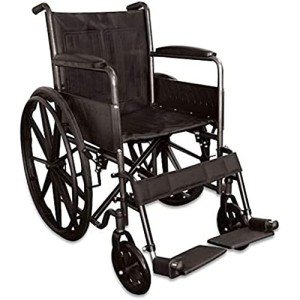A Look At The Future What Will The Lightweight Bariatric Transport Wheelchair Industry Look Like In 10 Years?

Bariatric Transport Wheelchair
Created to be pushed by caregivers, transport chairs include smaller sized front wheels and bigger rear wheels. They are a popular option for users with minimal mobility who can not walk separately.
When looking for a lightweight bariatric transport wheelchair, consider the user's needs and how they'll use the chair. Also, measure any doorways and other spaces the chair will travel through.
Seating
Bariatric transport chairs feature a large 22 to 36 inch large seating area that accommodates extra-large users. The chair seat is made from breathable nylon and comes with padded arms that can be removed and swing-away footrests. Unlike standard wheelchairs, which are perfect for typical body weights, bariatric chairs have much heavier frames built from strengthened products and larger rear wheels that make it simpler to press them. Talk with a mobility specialist to discover more about your alternatives and to determine which kind of wheelchair is ideal for you. Bariatric wheelchairs are often covered by insurance service providers like Medi-Cal if your medical condition meets their coverage requirements.
Frame
Bariatric transport wheelchairs utilize sturdy frames made from enhanced materials like steel and have broader seats than standard wheelchairs. They are designed for people with greater body weights and can hold an optimum weight capacity of 700 pounds. They likewise have bigger rear wheels, that make them easier for caretakers to press. Bariatric wheelchairs are typically covered by insurance coverage such as Medi-Cal, depending on the patient's specific medical needs and diagnosis. Ask a healthcare professional or mobility professional to help choose the ideal chair for your unique requirements.
Click here for more information. Medline Bariatric Transport Chair. Crimson Hammertone Frame.
Weight
While standard wheelchairs have lighter frames and smaller wheels, bariatric transport chairs feature heavier-duty materials and a wider seat to accommodate users who weigh more than average. Due to the fact that of their specialized design and building and construction, they tend to cost more than basic chairs. Nevertheless, some insurance programs like Medicare and Medi-Cal may cover the cost of these chairs if the user satisfies the requirements for protection. To learn more about which chair is best for you, get in touch with a rehab expert today.
Wheels
Bariatric transport wheelchairs have bigger rear wheels than standard models, making them simpler to push. They're typically utilized in healthcare facilities and home settings, where the chair is pressed by caretakers. lightweight bariatric wheelchair -large rear wheels likewise permit the chairs to navigate a range of surface, consisting of outdoors.

Basic wheelchairs typically have smaller sized wheels, which make them more maneuverable inside your home however less ideal for daily usage on outside streets and other surface areas. Mobility specialists recommend speaking with a doctor or mobility specialist to select the finest wheelchair for your specific needs and objectives.
This heavy-duty, nylon enhanced steel transport chair supports patients approximately 500 pounds and features a spacious 22" seat, padded desk-length armrests, swing-away footrests and hand brakes. The 12-inch rear wheels make sure a smooth trip in any environment.
